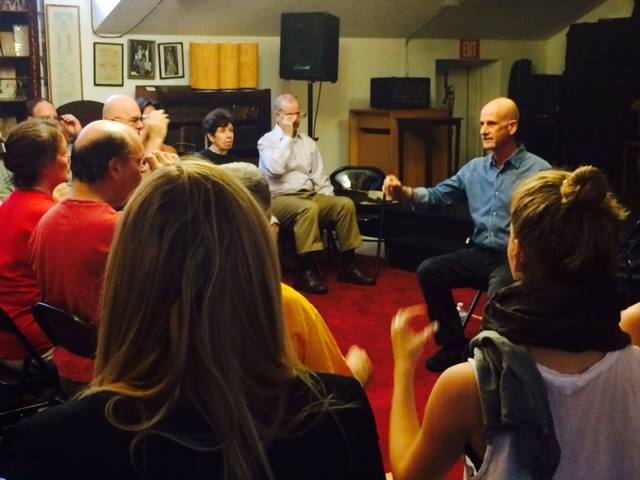 Force of habit is an interesting expression, and for some reason I’ve been hearing it a lot lately. The ‘habit’ part is something Alexander Technique teachers deal with every day. One of the 5000 descriptions of the Alexander Technique is that it helps you break unwanted habits. The ‘force’ part makes it seem like we’re powerless to resist; or that we have to resist at all.
Force of habit is an interesting expression, and for some reason I’ve been hearing it a lot lately. The ‘habit’ part is something Alexander Technique teachers deal with every day. One of the 5000 descriptions of the Alexander Technique is that it helps you break unwanted habits. The ‘force’ part makes it seem like we’re powerless to resist; or that we have to resist at all.
Our postural and movement patterns are initially formed for various reasons, not the least of which is imitation. They continue because we carry ourselves and move the way we’ve unconsciously moved for years. F.M. Alexander called this and other patterns ‘the lure of the familiar.’ We use the Alexander Technique to break detrimental postural habits not by using more force; It’s a gentler, less direct approach; more akin to the way jujutsu works than to the way a bulldozer does.
With the Alexander Technique we form new and more beneficial habits while sitting at the computer, standing, walking, bending… Pretty soon these new ways become second nature to us. We don’t have to force these new habits; they’re smoother, easier, and somehow familiar. Familiar because this is how we moved when we were children. The new habits get re-enforced when we notice our posture improving, our pain diminishing and other positive side effects of the Alexander Technique. Further re-enforcement occurs when others notice the changes.
The force of habit becomes less forceful. We overcome our bad habits as we gently step outside them and watch them wither away. When habits are broken, or changed, momentum could start to be built enabling us to make other positive changes. Some of these other positive changes are what Alexander called ‘the wider implications’ of the Alexander Technique.
Mark Josefsberg-Alexander Technique NYC
917.709.4648










With out the teacher guidance, its difficult to learn the alexander technique.
It is much much easier to learn the Alexander Technique with the aid of a Certified Alexander Technique teacher! However, books can be quite useful. also useful are newsletters. Mine is https://markjosefsberg.com/newsletter